Snowbikes, snowmobiles, ski bikes, Timbersleds, the machines designed to ride in the snow are pretty well like talking in another language to us Aussies, as we essentially have nowhere that we can ride them here. Snow riding just isn’t a thing.
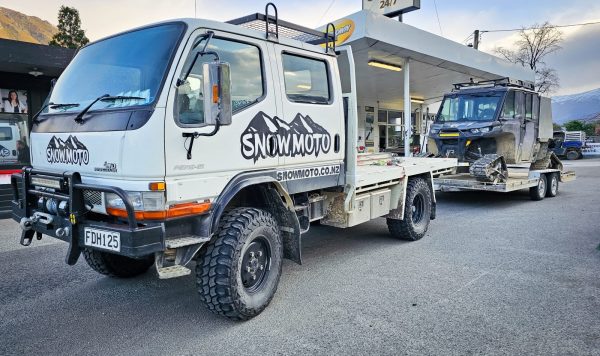
The concept is simple you need a wide footprint to not sink in snow, hence most of these machines utilise some form of ski up front and a belt up back for a wide footprint. It’s not dissimilar to a rubber version of a bulldozer track. The wider and longer the track is, the more stable and less prone to sinking the bike is, however it’s also less inclined to want to turn.
The concept of a snowmobile is not new. They are large, heavy and generally having two skis up front for steering. They have big motors (often turbocharged twin cylinder two-strokes) as you need grunt to overcome the power sapping snow. They are like the quads of our world. good workhorses to cart gear and people around, but nowhere near as nimble as a motorbike.
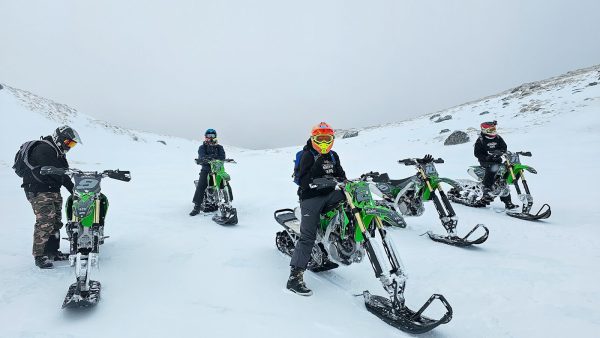
Snow bikes however are a combination of a dirtbike with wheels and a snowmobile mashed together. Ditching both wheels, putting a fat short ski in place of the front wheel and a “Timbersled” conversion to the rear wheel (the big rubber belt) converts our humble dirtbike into a snow wielding weapon. Light by snowbike standards (roughly 150-170kg) and much more nimble than a snowmobile, they can carve along cross slopes, through the trees and deep powder with ease. I’m sure you have seen the videos of bikes roosting through snow covered pine trees and doing wheelies. It all looks like a bit of fun but where can we do it?
Enter Snowmoto located in New Zealand and the brainchild of Hamish Goodall. Mad or genius is your call but the concept is unique and he’s the only operator offering you a chance to ride these custom beasties anywhere near our shores.
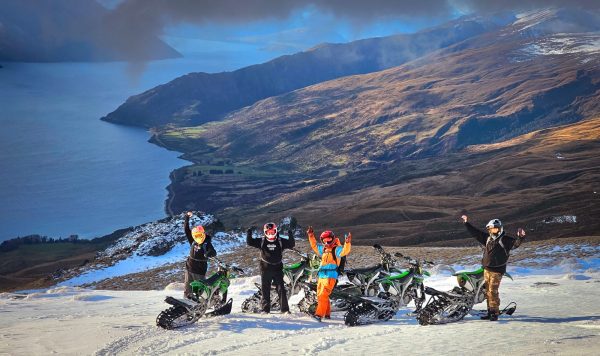
On paper it sounds simple, you just bolt up one of these Yeti or Timbersled style kits to the rear, slap on a ski on the front and roost right? Not so. There is another factor to consider here the cold.
Bikes don’t really like the cold much, and in the temperatures they ride in, minus 10 degrees or colder there can be issues with keeping the bikes at optimal operating temperature (around 70-80 degrees is ideal). Special thermostats are installed and of course digital temperature readouts. Often they cover the whole motor with wetsuit like materials to try and keep the heat in. It’s so cold that the choke lever often gets frozen stuck.

So you take stock dirtbikes and modify them to become snowbikes. With no wheels, a huge four foot long track on the back (with100 bearings in each track) and a ski up front, we are ready to rock. Hamish has done all the hard work here, and has a fleet of 10 KX450s modified to suit. All you have to do is get there, to Queenstown, New Zealand.
The lads pick you up in a 4×4 van or truck and drive you out to the venue an hours’ drive from town. As you ascend higher up the mountain and into the snow you change vehicles into a specially decked out fully enclosed side by side, with four tracks. These bad boys have massive gear reductions in the tracks so they howl along on the snow doing a top speed of 15km/h or so, pushing further into the white blizzard that is alpine snow.
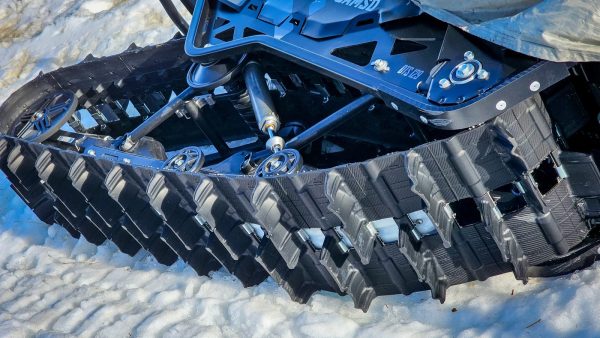
We arrived at the summit in a whiteout, to a small temporary encampment constructed out of converted plastic rainwater tanks. As the area we were playing on with the bikes is essentially Crown Land they have to apply for a permit to utilise the area for their snowbikes, and the structures need to be transportable.
Conditions were not ideal. We arrived in NZ in late September, the snow melt was occurring rapidly, and the snow quality was poor. Much of it was icy and hard with many exposed rocks. The bikes don’t like either proving very hard to steer on the ice and any rocks we avoided like the plague.
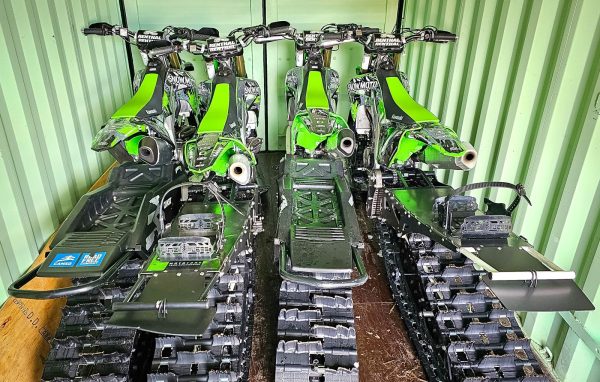
A brief introductory ride on the beasts left us somewhat concerned about what we had got ourselves in for. Howling winds, poor visibility and the hardpack meant the bikes were pigs to turn and hard to ride. Nightfall came quickly and the storm rolled in with a vengeance.
We awoke the next morning to find our door blocked with snow. It was minus 10 degrees outside and several feet of fresh powder snow had fallen. This was good for snowbiking, but we would need the blizzard to abate before we could see where we were going and ride. After waiting until 1pm, finally conditions were improving and we all set out on our bright green snow steeds for some action.
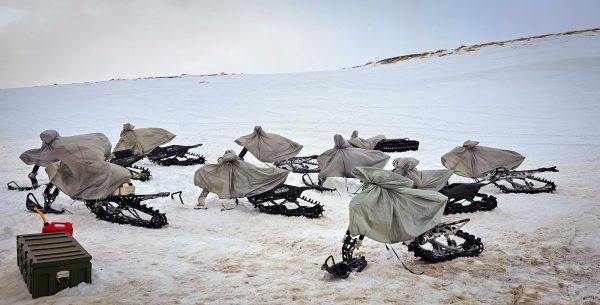
The side of the hill where camp was setup was still hard frozen wind driven ice, however the other side of the mountain was powder. Deep snow that was perfect for these bikes! After some sketchy wobblings to get over the summit, we dropped down into snow blinded cliffs and valleys to find a section that had a bit of visibility upon which we could play.
Suddenly, the Snowbikes came into their own. On the soft powder, they actually steered. The belts hooked up and they started to resemble a dirtbike again versus a train that wanted to go in a straight line. As we started to find our groove and explore the canyons, the climbs became steeper and crew became more game to tackle the obstacles.

For a brief hour or so we actually saw some blue sky and had some peeks of the sun. Cameras were pulled out and we started launching the bikes over jumps. NOW we were having fun!
Pulling wheelies and carving the powder berms. It was surprising just how much it dulled the otherwise explosive power of a KX450. Big revs and fistfuls of throttle were required to get these beasts hooking up. You don’t want to move off the line half- mast as putting a foot down in the soft powder is not an option (you fall over), hence judicious throttle action is required.
We rolled around the various back canyons of the mountain having a blast playing follow the leader, behind our guide. Lose sight of him however and you’re almost guaranteed to get lost in the whiteout as we generally had no idea where we were!
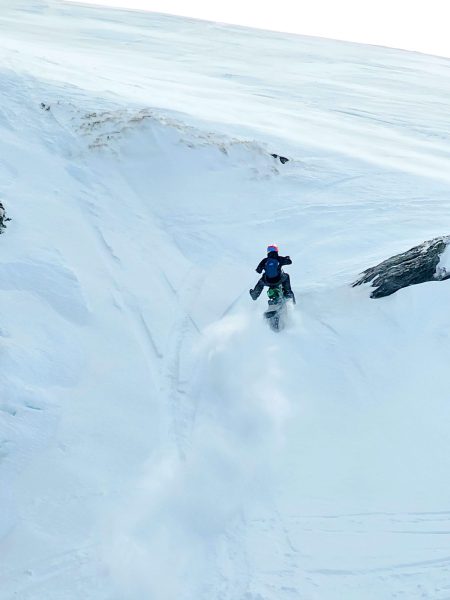
We came across several sections of hardpack that had frozen over like solid ice and the belts did not like these. Just like on a frozen pond, they had little traction and started to wheelspin with little forward momentum. We simply had to rely on momentum to get us up and over these icy sections, a pucker moment indeed!
After the second day we were confident amongst ourselves that we were starting to get it, and quickly learnt that these machines really need the right conditions to shine. Soft powder, as deep as you can find it is what they want.
If you’re keen to give them a whirl then remember this, timing is important. Go when the season is best and there is a good coverage of snow. They don’t like to steer like a normal bike, think more like skiing. Bring plenty of winter woollies as it’s obviously cold.
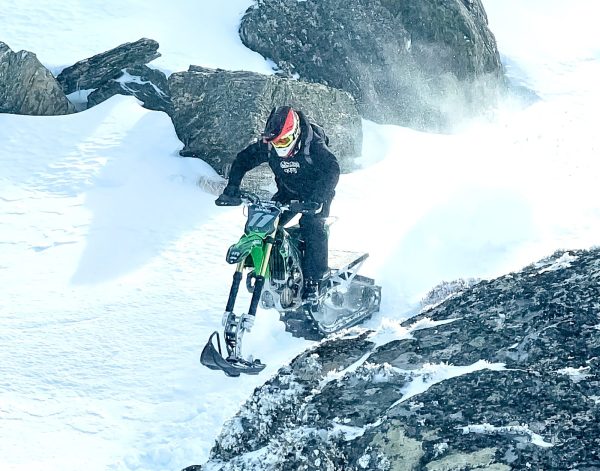
Don’t book in for a short hour long ride because you will regret it. It takes time to get into the swing of it, so the two day ride is recommended. It’s certainly a unique riding experience in a really nice part of the world, so it’s definitely worth a crack. Give the team at Snowmoto a holler. https://www.snowmoto.co.nz
WORDS AND PHOTOS | BERNIE DEN HERTOG